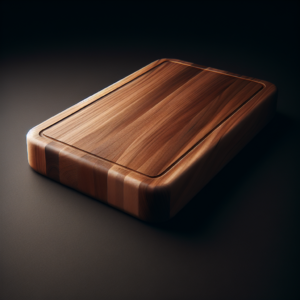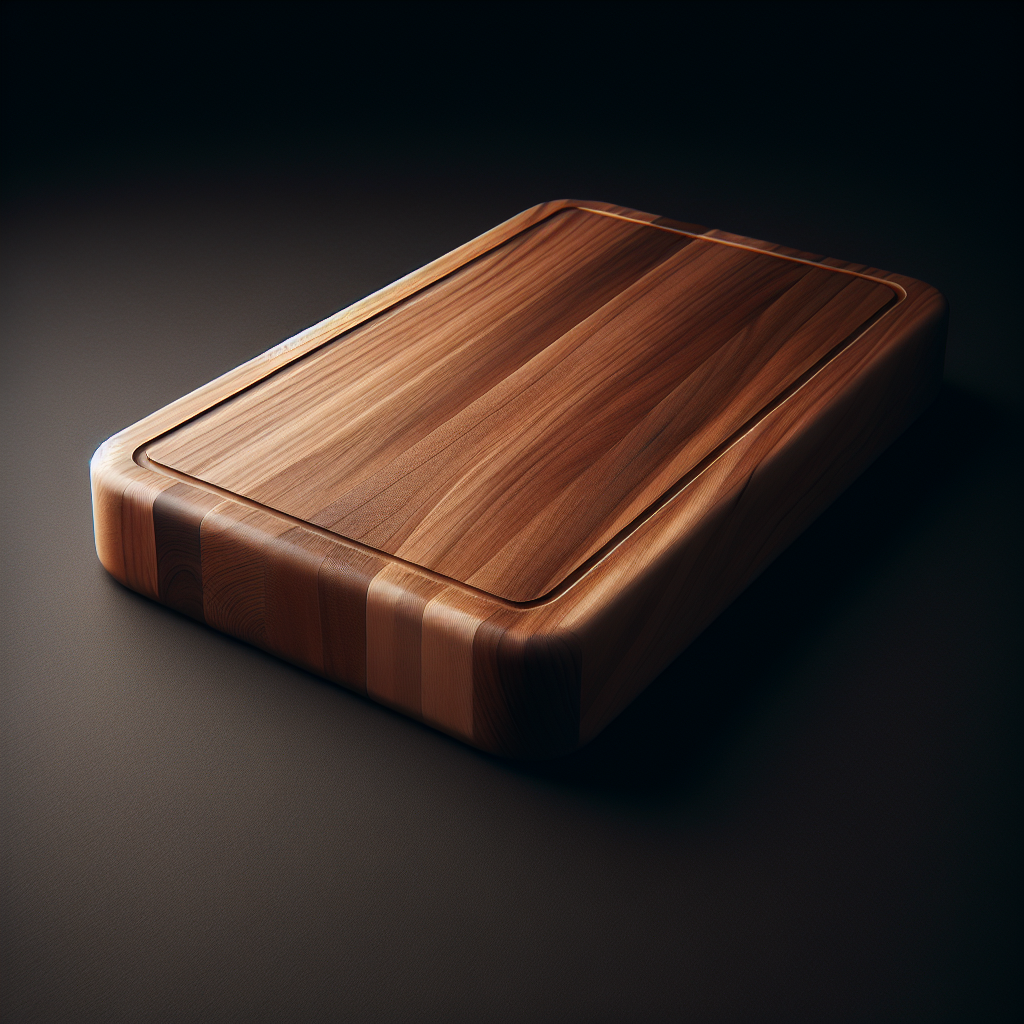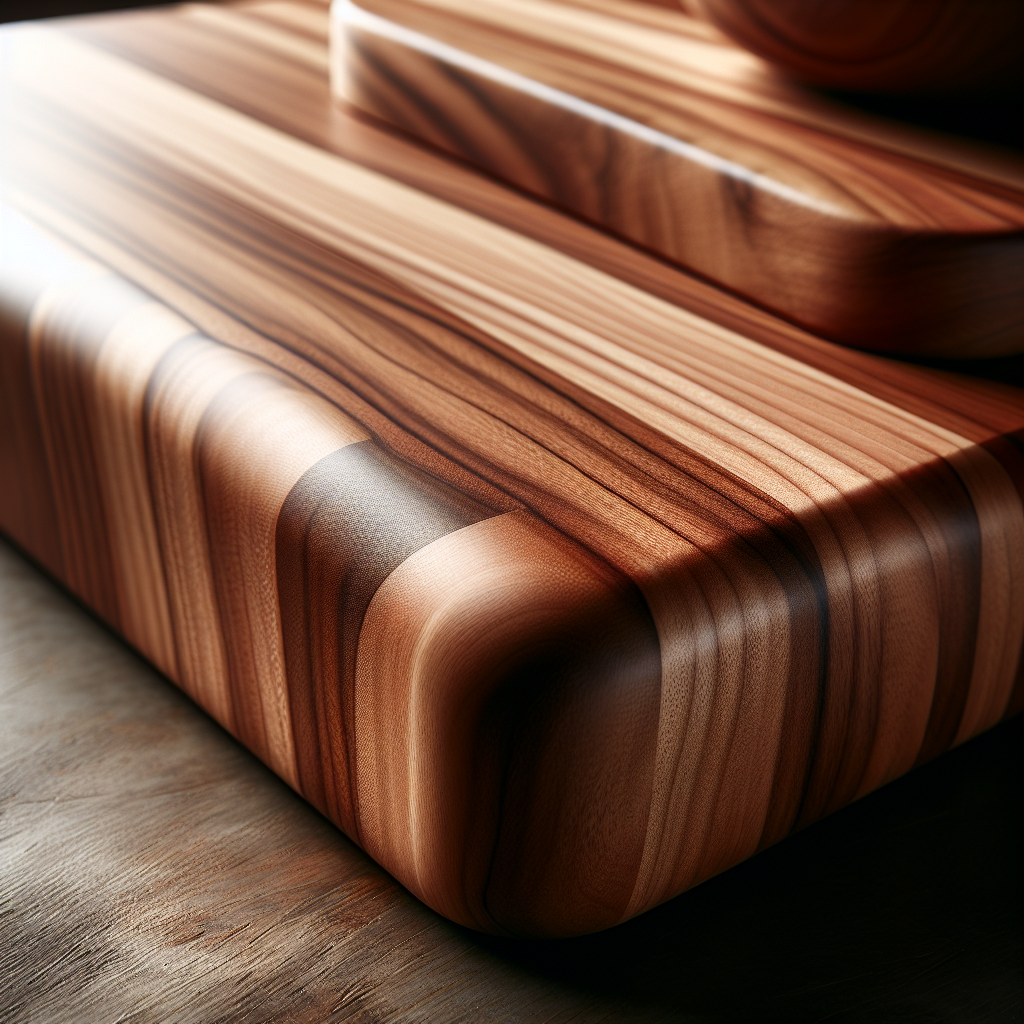What Features Should I Look For In A Good Quality Cutting Board?
November 20, 2023

When it comes to finding the perfect cutting board, there are a few key features that you should keep in mind. Whether you’re a seasoned chef or a casual cook, having a sturdy and reliable cutting board is essential for a smooth and enjoyable cooking experience. From the material to the size, and even the maintenance, each feature plays a vital role in finding the right cutting board that suits your needs. Let’s explore the important features that you should look for in a good quality cutting board.

Material
When it comes to choosing a cutting board, one of the most important factors to consider is the material it is made from. Different materials offer different benefits, so it’s essential to choose one that suits your needs and preferences.
Wood
Wood cutting boards are a classic choice for many home cooks. They are not only aesthetically pleasing but also provide a sturdy and durable surface for slicing and dicing. Wood is also known for its ability to absorb the impact of knife blades, which helps to preserve the sharpness of your knives. Additionally, wood has natural antimicrobial properties, making it a hygienic choice for handling food.
Plastic
Plastic cutting boards are often praised for their ease of maintenance and affordability. They are lightweight, dishwasher safe, and come in a variety of colors. Plastic is non-porous and doesn’t absorb liquids, which reduces the risk of cross-contamination. However, plastic boards can be prone to knife marks and scratches, which can harbor bacteria if not properly cleaned.
Bamboo
Bamboo cutting boards have gained popularity in recent years due to their eco-friendly nature. Bamboo is a sustainable and renewable material that grows quickly, making it an environmentally responsible choice. Bamboo boards are also known for their durability and beautiful natural grain patterns. However, they may require regular oil treatment to maintain their longevity and prevent cracking.
Glass
Glass cutting boards offer a sleek and modern look to any kitchen. They are non-porous, making them resistant to stains and odors. Glass boards are also easy to clean and can be placed in the dishwasher for convenience. However, they can be hard on knives and may dull the blade over time. Additionally, glass boards can be slippery, which may affect the stability when cutting.
Composite Materials
Composite cutting boards are made from a combination of materials, such as wood fibers and resins. These boards are designed to offer the best of both worlds, combining the durability of wood with the ease of maintenance of plastic. Composite boards are usually knife-friendly and have antimicrobial properties. However, they may be more expensive than other options and require special care to maintain their integrity.
Size and Thickness
Choosing the right size and thickness for your cutting board is crucial for practicality and comfort. Here are some factors to consider when determining the ideal dimensions for your cutting board.
Size Considerations
When it comes to size, consider both your countertop space and your cooking needs. A cutting board that is too large may not fit your workspace, while one that is too small may limit your ability to chop ingredients comfortably. Ideally, a cutting board should be large enough to accommodate the food you frequently prepare without overcrowding your workspace.
Thickness Considerations
The thickness of a cutting board can affect its durability and stability. Thicker boards tend to be more sturdy and less prone to warping or bending, which is especially important if you use heavy-duty knives. However, thicker boards may also be heavier and more challenging to maneuver. On the other hand, thinner boards are lightweight and easy to handle but may be less durable in the long run.
Durability
A good quality cutting board should be able to withstand regular use and maintain its integrity over time. Consider the following factors when assessing the durability of a cutting board.
Resistance to Warping
Warping can occur when a cutting board is exposed to moisture or inconsistent temperature. Wood cutting boards are particularly prone to warping, which can affect their stability and usability. Plastic and composite boards tend to be more resistant to warping, making them a reliable choice in this aspect.
Resistance to Scratches
Knife marks and scratches are inevitable on any cutting board, but some materials are more resistant to these marks than others. Wood cutting boards, especially those made of harder woods like maple or teak, are known for their ability to hide knife marks. Plastic and composite boards are also less likely to show scratches, whereas glass boards tend to be more susceptible to them.
Resistance to Staining
Staining can not only affect the appearance of a cutting board but also indicate potential bacteria growth. Plastic and composite boards are generally more stain-resistant, thanks to their non-porous surface. Wood boards may develop stains over time, but regular cleaning and maintenance can help minimize this issue.

Maintenance
Proper maintenance is essential to prolong the life of your cutting board and ensure its safety and functionality. Consider these factors when evaluating the maintenance requirements of different cutting board materials.
Ease of Cleaning
A cutting board should be easy to clean to prevent the buildup of bacteria and food particles. Plastic and composite boards are dishwasher safe, making them a convenient choice for those who prefer the ease of machine washing. Wood and bamboo boards typically require hand washing to prevent damage to the material. Regardless of the material, it’s important to clean your cutting board thoroughly after each use to maintain food safety.
Dishwasher Safe
If you prefer the convenience of dishwasher cleaning, opt for a cutting board that is dishwasher safe. Plastic and composite boards are generally safe to place in the dishwasher, but always check the manufacturer’s recommendations. Wood and bamboo boards are not dishwasher safe and should be hand washed to avoid damage and warping.
Oil Treatment
Wood and bamboo cutting boards require regular oil treatment to maintain their appearance and prevent cracking. Applying food-grade mineral oil or specialized cutting board oil helps to seal the surface and maintain its moisture balance. This treatment can help prolong the lifespan of the board and prevent the growth of bacteria.
Stability and Grip
A stable cutting board provides a secure and comfortable surface for chopping, preventing accidents and enhancing efficiency. Consider the following factors when assessing the stability and grip of a cutting board.
Stability on Countertop
A cutting board should stay in place while you’re working to prevent accidents. Look for a cutting board with non-slip feet or grips to ensure stability. Wood and bamboo boards generally have natural grip due to their textured surface, while plastic and composite boards may have rubberized grips or feet to prevent sliding.
Non-Slip Surface
Along with stability, the surface of the cutting board should also provide good grip for your ingredients. Wood and bamboo boards are known for their natural non-slip surface. Plastic and composite boards may have textured surfaces to enhance grip. Glass cutting boards can be slippery, making them less ideal for precise cutting tasks.
Knife-Friendly Surface
Preserving the sharpness of your knives is important to prevent accidents and maintain the efficiency of your cutting tools. Look for these features in a cutting board to ensure a knife-friendly surface.
Minimizing Knife Dullness
Some materials are more forgiving on knife blades than others. Wood and bamboo boards have been found to minimize the dulling effect on knives due to their ability to absorb the impact of the blade. Plastic and composite boards are also generally knife-friendly, but sharp knives may leave deeper marks and scratches over time. Glass boards tend to have a high potential for dulling knives and should be avoided if knife longevity is a priority.
Low Knife Impact
A cutting board with a slightly softer surface can help reduce the impact on your knives. Wood and bamboo boards are naturally softer compared to plastic and composite boards. This can help preserve the sharpness of your knives, as the blade is less likely to come into direct contact with a hard surface.
Food Safety
Ensuring the safety and hygiene of your cutting board is crucial when handling food. Consider these factors to assess the food safety features of different cutting board materials.
Non-Porous Surface
A non-porous surface is essential to prevent the absorption and growth of bacteria. Plastic and composite boards have a non-porous surface, making them less likely to harbor bacteria. Wood and bamboo boards are also considered relatively safe due to their natural antimicrobial properties. However, it’s important to note that proper cleaning and maintenance are crucial to maintaining food safety regardless of the material.
Antimicrobial Properties
Wood cutting boards have natural antimicrobial properties, which can help inhibit the growth of bacteria. Studies have shown that certain woods, such as maple and walnut, have natural antimicrobial properties that can contribute to a safe food handling environment. Plastic and composite boards may also have antimicrobial properties, but it’s essential to check the manufacturer’s specifications.
Versatility
A versatile cutting board can enhance your cooking experience by offering additional functionality and convenience. Consider the following features when assessing the versatility of a cutting board.
Double-Sided Usage
Some cutting boards are designed to be reversible, offering a different surface on each side. This feature allows you to use one side for cutting raw meats and the other side for chopping fruits and vegetables, reducing the risk of cross-contamination. Reversible cutting boards can also provide a variety of cutting surfaces, ensuring you have the appropriate surface for any task.
Reversible Design
In addition to double-sided usage, some cutting boards have a reversible design that allows you to use both sides interchangeably. This feature comes in handy when one side becomes worn or develops deep knife marks, as you can simply flip the board and continue using it without compromising its functionality. A reversible design can extend the lifespan of your cutting board.
Heat Resistance
A heat-resistant cutting board is useful when handling hot pots and pans or placing hot items directly on the board. Consider the following factors when evaluating the heat resistance of a cutting board.
Ability to Withstand High Temperatures
Plastic cutting boards are generally more heat-resistant compared to other materials. They can handle high temperatures without warping or melting. Wood, bamboo, and composite boards may have limitations in terms of heat resistance, and it’s important to follow the manufacturer’s recommendations. Glass cutting boards are heat resistant but can be prone to cracking if subjected to extreme temperature changes.
Aesthetics
While functionality and durability are essential, the appearance of a cutting board can also contribute to the overall aesthetics of your kitchen. Consider these factors when assessing the aesthetic appeal of different cutting board options.
Style
Cutting boards come in various styles, from rustic and natural to sleek and modern. Wood and bamboo cutting boards offer a warm and organic feel, while plastic and composite boards can provide a contemporary and colorful touch. Glass cutting boards have a sophisticated and minimalist aesthetic that can complement any kitchen decor.
Color Options
If you want to add a pop of color to your kitchen, choosing a cutting board with vibrant or unique color options can be a great choice. Plastic and composite cutting boards offer a wide range of color choices, allowing you to match your cutting board to your kitchen’s color scheme.
In conclusion, choosing a good quality cutting board involves considering its material, size, and thickness, as well as factors such as durability, maintenance requirements, stability and grip, knife-friendliness, food safety features, versatility, heat resistance, and aesthetics. By evaluating these different aspects, you can find the perfect cutting board that suits your needs, enhances your cooking experience, and lasts for years to come.
